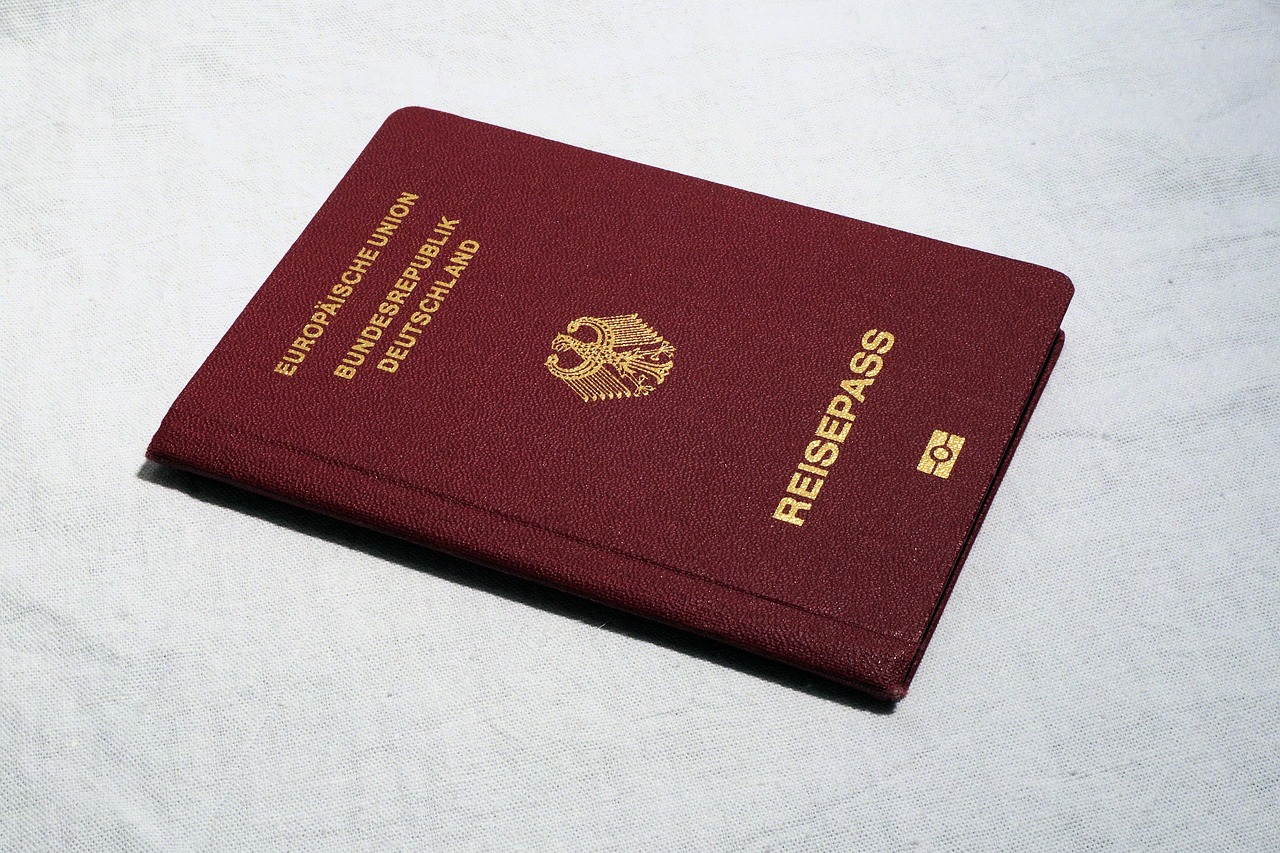In recent years, traveling with pets has become increasingly popular, leading to the necessity of understanding the concept of a dog passport, or 강아지 여권. This essential document ensures that your furry friend can join you on adventures abroad while meeting all health and regulatory requirements. From vaccinations to identification, having a proper passport for your dog can make travel smoother and stress-free. If you’re planning a trip with your canine companion, it’s crucial to know what this entails. Let’s explore in detail below.
Understanding the Dog Passport
What is a Dog Passport?
A dog passport, often referred to as a pet passport, is an essential document that allows your canine companion to travel internationally. This document serves as proof of your pet’s identity and health status, ensuring compliance with the various regulations set by different countries. It typically includes information about your dog’s breed, age, microchip number, and vaccination records. Having this passport is crucial for smooth border crossings and helps prevent any potential issues that could arise due to inadequate documentation.
Why is a Dog Passport Important?

The significance of having a dog passport cannot be overstated. Many countries have strict entry requirements for pets, including specific vaccinations and health checks. Without a proper passport, you may face delays at customs or even be denied entry altogether. Additionally, having this document can safeguard your pet’s health by ensuring they are vaccinated against diseases prevalent in different regions. Furthermore, it provides peace of mind for pet owners, knowing that they have taken the necessary steps to keep their furry friends safe during travel.
How to Obtain a Dog Passport
Obtaining a dog passport involves several steps that must be carefully followed. First, you will need to have your dog microchipped if it hasn’t been done already. This microchip serves as a permanent form of identification. Next, schedule an appointment with a veterinarian who can provide the necessary vaccinations and health checks required by the destination country. Once these steps are completed, the veterinarian can issue the passport or complete the required forms that will serve as your dog’s travel documentation.
Health Requirements for Traveling Dogs
Vaccinations Needed
Before embarking on international travel with your dog, it is vital to ensure they are up-to-date on all required vaccinations. Common vaccinations include rabies, distemper, parvovirus, and hepatitis. The specific vaccines needed can vary depending on the country you are visiting; therefore, it’s essential to check the destination’s requirements well in advance of your trip. Some countries may require proof of vaccination administered within a certain timeframe before travel.
Health Certificates
In addition to vaccinations, many countries require health certificates issued by licensed veterinarians. These certificates confirm that your dog is free from contagious diseases and fit for travel. A health certificate typically includes details such as vaccination dates and results from recent health examinations. It’s important to ensure that this certificate is issued close to your departure date since many countries have specific validity periods for these documents.
Parasite Treatments
Some destinations may also require proof of treatment against parasites like ticks and tapeworms prior to entering their borders. These treatments usually need to be administered within a certain timeframe before travel and documented accordingly in your dog’s passport or health certificate. Ensuring that your pet has received all necessary treatments not only helps comply with regulations but also protects their health during the journey.
Traveling Logistics with Your Dog
Choosing Pet-Friendly Accommodations
When planning your trip, it’s crucial to select accommodations that welcome pets. Many hotels and vacation rentals now offer pet-friendly options; however, policies can vary widely regarding size limits or additional fees associated with bringing pets along. Researching in advance ensures you find suitable lodging where both you and your furry friend can feel comfortable during your stay.
Packing Essentials for Your Dog
Just like humans need packing lists for travel, dogs have their own essentials that should not be overlooked. Items such as food and water bowls, sufficient food supplies for the duration of the trip, medications (if needed), grooming supplies, favorite toys for comfort, and a leash are all important components of keeping your dog happy while traveling. Additionally, consider packing bedding or blankets that smell like home to help ease any anxiety during transit.
Preparing Your Dog for Travel
Preparation is key when it comes to ensuring that your dog adapts well to travel situations. Gradual acclimatization can help minimize stress; take short trips with your dog leading up to longer journeys so they become accustomed to being in vehicles or unfamiliar environments. Training sessions focusing on obedience commands can also enhance their behavior during travel times.
Air Travel Considerations for Dogs
Aviation Regulations for Pets
Airlines have specific regulations regarding pet travel which differ widely among carriers; therefore it’s essential to familiarize yourself with these rules ahead of time. Some airlines allow dogs in the cabin if they meet size restrictions while others may require them to be transported in cargo holds under specific conditions designed for animal safety.
Selecting Appropriate Crates or Carriers
If air travel involves using cargo holds or cabins designated for animals, selecting an appropriate crate or carrier is crucial for safety and comfort during flight times. The crate should be well-ventilated with enough space for your pet to stand up comfortably without feeling cramped. Additionally, labeling the crate clearly with contact information ensures that airline staff can quickly identify owners in case of emergencies.
Reducing Travel Anxiety in Dogs
Many dogs experience anxiety when traveling due to changes in environment or routine; hence it’s beneficial to employ strategies aimed at alleviating this stress before and during flights. Familiarizing them with their crates beforehand can help reduce fear associated with confinement while calming aids such as pheromone sprays or anxiety wraps may provide added comfort throughout the journey.
Regulations by Destination Countries
Country-Specific Requirements
Each country has its unique set of regulations concerning importing pets which often includes detailed stipulations regarding vaccinations and quarantine periods if applicable upon arrival. Thorough research into these requirements ensures compliance while helping you avoid unexpected complications during border crossings.
Quarantine Procedures Explained
Some nations may enforce quarantine protocols especially if documentation appears incomplete or vaccination records do not meet specified standards upon arrival at customs checkpoints; understanding how long quarantines might last allows travelers ample time planning around potential delays without placing undue stress on themselves or their pets.
Customs Clearance Process Simplified
Navigating through customs can sometimes prove daunting when traveling internationally with pets; however understanding what documents must be presented can streamline this process significantly upon arrival at various ports-of-entry around the globe—thus making it easier overall!
The Role of Microchipping in Pet Travel

The Importance of Microchipping Your Dog
Microchipping serves as an invaluable tool for identifying lost pets during travels—especially given how easily dogs can become disoriented in new environments! A microchip provides permanent identification linked directly back to owners through databases maintained by veterinary clinics worldwide thereby enhancing chances of reunification should separation occur unexpectedly while away from home base locations.
The Microchipping Process Explained
The microchipping procedure itself involves visiting a veterinarian who will implant a small chip beneath the skin between shoulder blades using specialized equipment—this process typically takes only moments yet offers immense peace-of-mind knowing one’s furry family member remains traceable no matter where adventures lead!
Checking Microchip Registration Information Regularly
It’s imperative that owners routinely verify their contact details associated with registered microchips remain accurate over time especially following moves or changes in phone numbers—this ensures successful reunification efforts should situations arise requiring intervention due lost identification tags amidst travels across unfamiliar territories!
In conclusion of the article
Traveling with your dog can be a rewarding experience, but it requires careful planning and consideration of various factors. Ensuring that your pet has a passport, meets health requirements, and is prepared for the journey are all essential steps to take. By following the guidelines outlined in this article, you can help ensure a smooth and enjoyable trip for both you and your canine companion.
Recommended reference

1. Check the specific vaccination requirements of your destination country.
2. Ensure your dog is microchipped before traveling.
3. Obtain a health certificate from a licensed veterinarian close to your departure date.
4. Research pet-friendly accommodations in advance.
5. Familiarize your dog with travel crates or carriers ahead of time to ease anxiety.
Summary overview
This article provides essential information on the importance of obtaining a dog passport for international travel, including health requirements such as vaccinations and health certificates. It also covers practical tips for preparing for travel, choosing pet-friendly accommodations, and understanding airline regulations. Additionally, it emphasizes the significance of microchipping for identification purposes while traveling with pets. Following these guidelines can enhance the safety and comfort of your furry friend during journeys abroad.






